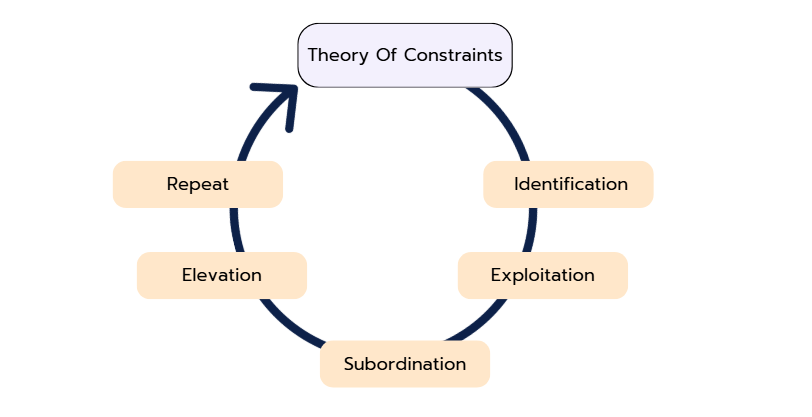Theory of Constraints (TOC), also known as Bottleneck theory, was developed by Israeli physicist and entrepreneur Eliyahu M. Goldratt. This theory is a management approach that aims to improve organizational performance by focusing on identifying and eliminating bottlenecks.
A bottleneck is a part of the production process or a resource that limits a company's production capacity and thus affects overall performance. Similar to a bottleneck that reduces the flow of a liquid, creating a bottleneck, certain factors in organizations create bottlenecks that can slow, limit or prevent operations.
1. Basic Principles Of The Theory Of Constraints
Bottleneck theory is based on several fundamental principles:

- The flow principle:
TOC emphasizes that a company's production should be designed to function like a continuous flow. Each step in the process should be matched to the speed of the bottleneck to avoid congestion and overproduction. - Identification of the bottleneck:
Identification of the bottleneck is critical. This step requires a detailed analysis to identify the resource or process step that has the highest capacity constraint. - Exploitation (utilization of the bottleneck):
After identifying the bottleneck, the company should ensure that it is optimally utilized. This means that all resources and activities should be directed towards using the bottleneck as efficiently as possible. - Subordination:
All other activities in the organization should be subordinate to the performance of the bottleneck. This means that the speed and output of the bottleneck determines the speed and output of the entire process. - Elevation (Elevating the Bottleneck):
If the bottleneck can be permanently eliminated or its capacity can be increased, the elimination should also be considered to increase the overall performance of the company. To this end, it may also be profitable to invest costs to remove the bottleneck, which will subsequently be recouped through an improved process and improve production operations.
2. Examples From The Economy
- Manufacturing companies:
In the manufacturing industry, bottleneck theory is particularly relevant. A classic example is the production of cars. If the assembly line is faster than the supply of engines, production will be limited by the availability of engines, leading to inefficient labor processes and inventory. TOC would suggest optimizing the bottleneck, engine supply, and ensuring that it is synchronized with the assembly line.
=> Check out some of our Car-Cases to learn for your upcoming case interview:


